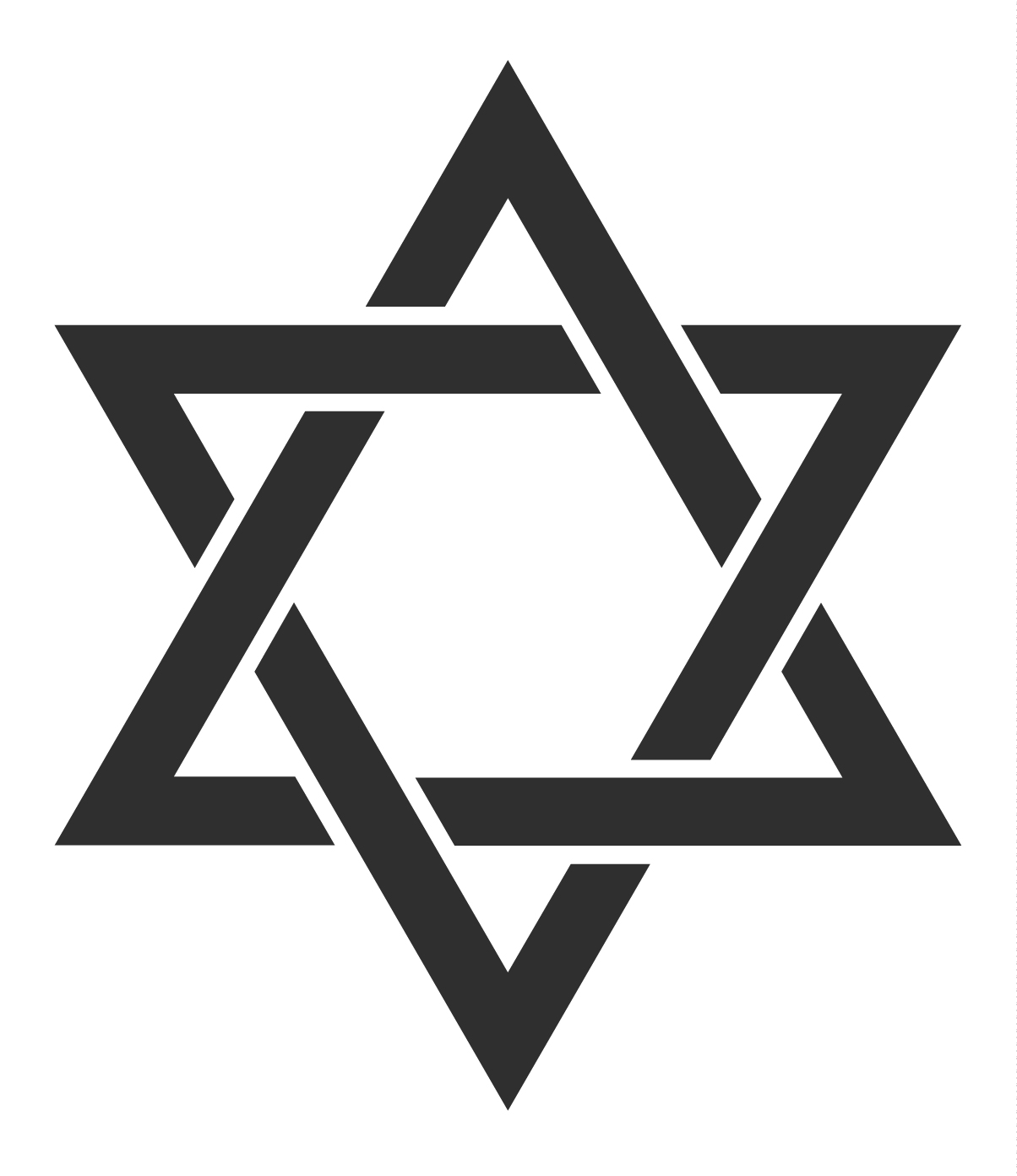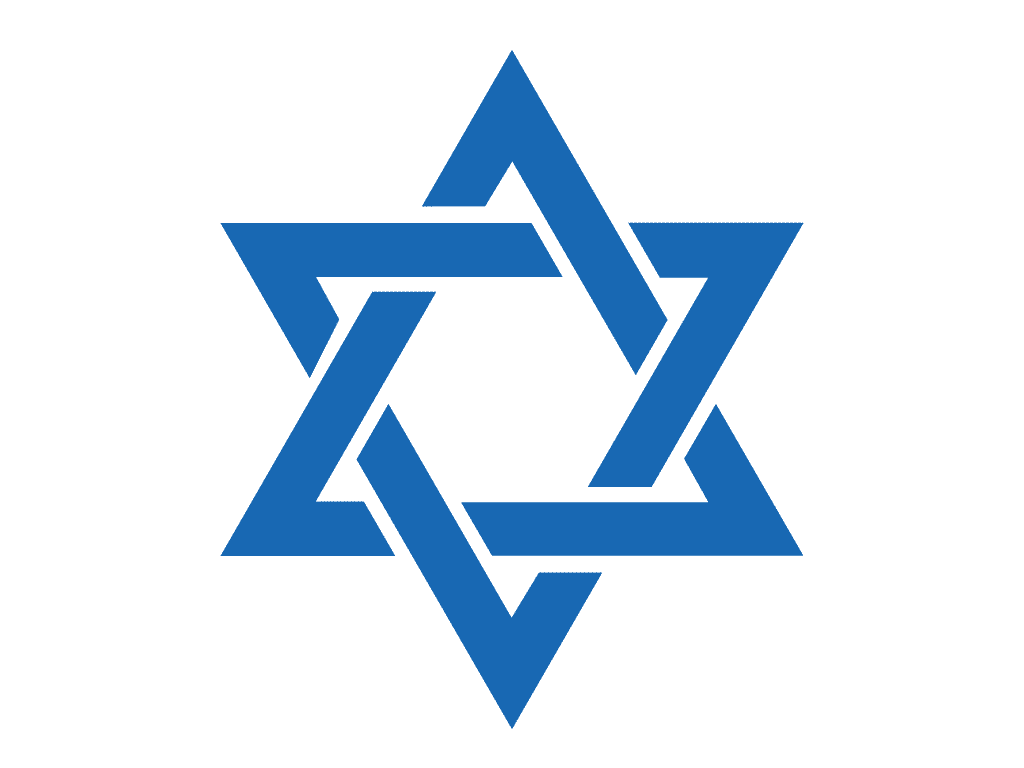When one thinks of religious symbols, one of the first that comes to mind is the six-point “Jewish star”, no doubt. Also seen on the flag of Israel, the Star of David is one of the most important symbols in Judaism. In this post about the Star of David, its meaning and definition, we will be examining the symbol and its history in depth.
Also called ‘the Magen David’ or ‘the Shield of David’ in Hebrew language, ‘the Star of David’ is a symbol universally recognized as a representation of modern Jewish heritage and beliefs. The official name for ‘the Shield of David’ is ‘Magen David’, which is a name that was used long ago (in the 11th Century) as another name for ‘the God of Israel’.
Shaped as a hexagram, the Star of David symbol became more common as a Jewish icon in the 19th Century, especially throughout Eastern Europe.
This is thought to have happened because more people started wanting to represent their Jewish identity in the same way that the Christian cross represented Christianity.
On a side note, in addition to Jewish synagogues, the Star of David was also used in a number of Christian churches as a decorative piece.
Table of Contents
The Star of David’s History
Early uses of the hexagram seen in the Star of David can be seen dating far back in history, where it was used purely as a decoration on antiquities.
Some scholars suggest that this shape might have been used as an ornament in synagogues, even before its religious connotations were formed. One of the first uses linked to Jewish identity was in the 11th Century, when the famous Tanakh manuscript featured it as an ornament in 1008.
A hundred years later, the Star of David was used again in the Leningrad Codex in 1108. This book is known to be the longest-surviving, full edition of the Hebrew Bible that still exists in modern day.
In the 17th Century, the bustling Jewish quarter located in Vienna featured markings that contained hexagrams, the same shape used within the Star of David.
This was intended to distinguish this quarter of the city from the rest of the architecture, providing a clear marker of the Jewish identity within the city. This was around the same time that the symbol began to be used en-masse in synagogues throughout Europe, Africa and the Middle East.
At the end of the 19th Century, the Star of David/the Jewish star became a symbol of the Zionist movement, propelling its symbolism of Jewish identity on the international stage.
On a sad and unfortunate side note, later on during World War II in the 20th century, the Star of David was chosen by the Nazis as the symbol to mark and identify Jewish individuals for persecution.
The symbol used was typically yellow, or blue with a white background, and wearing one was enforced by the Nazi population. It became mandatory and anyone from Jewish population who did not wear it was punished severely.
Despite this kind of inhumane use of the symbol, some Jewish people chose to wear the symbol voluntarily as a show of defiance against the Nazi invasion.
After the Holocaust, the Star of David was used in the national flag of Israel.
The Star of David – Meanings and Symbolism
Although many different meanings were attributed to the Star of David, no single meaning is completely accepted by all members of the Jewish community.
A medieval Jewish text suggests that the six points of the Jewish star are indicative of the six male attributes of God.
Furthermore, since the 20th century, the Star of David has been associated with the number seven, and thus with the Menorah, namely the ancient, seven-lamp Hebrew lampstand that featured in the Bible and was used by Moses.
Other suggestions link the Star of David’s design with the six directions of space as described in the Sefer Yetsira (North, South, East, West, Centre, Up and Down); the six days of creation, and the seventh day of rest, and the six working days of each week in the calendar.
There are various other interpretations throughout history, each with their own meaning, though those listed above are the most commonly reiterated amongst the Jewish community.
Regardless of the number of definitions and meanings that have been attributed to the Star of David symbol, there is a common point between all these attributions; each point of the star is indicative of something in itself, with the center of the hexagram also representing something.
The Star of David and Its Use Throughout the World
In the modern world, the Star of David has a number of uses, though these haven’t changed a great deal throughout history.
Since 1948, the flag of Israel has featured a blue hexagram on a white background.
It can also be commonly used in sports, with notable stars from Israel or of Jewish heritage choosing to use the symbol to represent their heritage. Modern synagogues also continue to use the Star of David/the Jewish star in their architecture.
Hope you liked our post about the six-point Jewish Star, the Star of David, its meaning and history. Please share the content if you did, many thanks!


